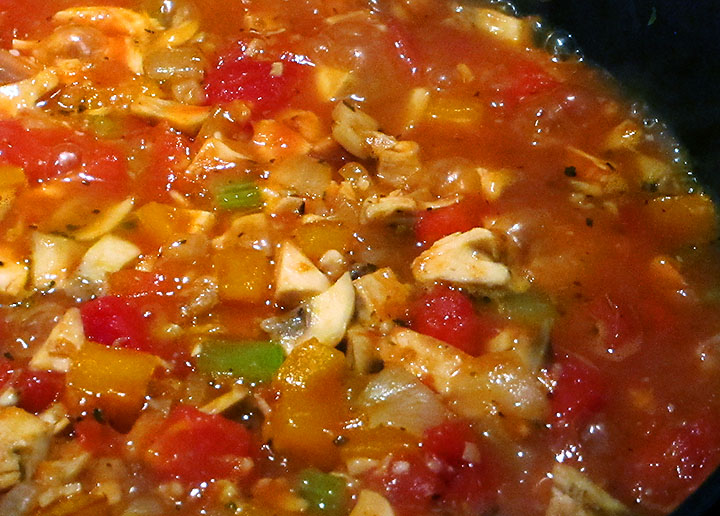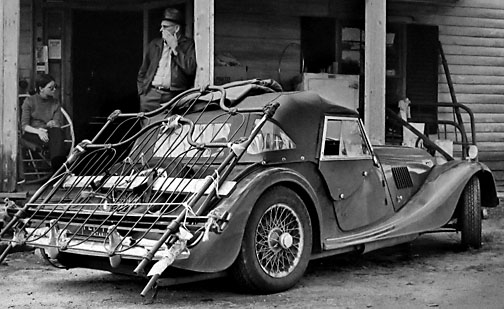I'm pushing 67. I'm retired. My heart is failing — slowly. This is not the life I expected to be living in my senior years.
I planned on traveling in my retirement. I still long to visit Romania and Bulgaria. Yes, Romania and Bulgaria. Why? It's a long story and not too relevant today as my chances of actually visiting those countries is fading with each passing day. Getting insurance may be impossible and no insurance means no trip.
Still, I'm happy — exceedingly happy. I have found a sweet spot in life of which I had not an inkling when I was young. One's senior years are, to steal the words of Rod Serling, "A dimension not only of sight and sound, but of mind." With a positive outlook, a willingness to take delight in the moment, life is grand.
I have three grandchildren. It doesn't get any better than that — unless you have four.
I've read that we tend to dwell more on unpleasant events in our lives and to use stronger words to describe them than happy ones. Not me. Don't get me wrong. I love a good personal disaster story as much as anyone. Ask me about sailing. I can tell as good a terror-filled sailing tale as the next sailor but press me and I'll slip into wonderful memories from my days of solo sailing. I loved to sit at the front of my boat, legs straddling the sharply pointed bow and dangling so low that my feet got wet from the surge forward as the boat slashed through the waves of Lake Huron. I'd sit leaning forward with arms resting on the stainless steel bow pulpit.
I loved solo sailing. I'd put my one-degree robot at the helm, a black English autopilot, I'd grab a beer and relax. Drinking on a large sailboat was not illegal back then. Trust me, there is nothing like a cold one enjoyed all alone on a sailboat thrust by the wind into a darkening night. (And yes, I did wear a harness. Fall off a boat with Auto at the helm and the boat will simply sail away.)
I also recall my English roadster — a Morgan — another wonderful memory maker. My Morgan didn't just take me places, it took me to new places. Unheard of places. Places in need of discovery. And it didn't just take me there but it also reveled in revealing the people living in those hidden places. My Morgan spent its first years of our life together traveling the American South: Kentucky, Tennessee, Georgia, Alabama, Mississippi were among its favourite destinations.
I vividly recall one of my best Morgan adventures: Corinth, Mississippi. Need I say more? Back then the bars in the Deep South were among the greatest dive bars in the world. Cheap beer, even cheaper burgers, great music — the musicians were often back up players from Nashville earning a little extra cash — and did I say buckets of cheap beer?
I wore my hair long back then and when I entered the bar in Corinth I had just about the longest hair in the place. If it had been possible for the place to go quiet, my entrance would have done it. But it wasn't possible and it didn't. The rock and roll alternated with country and western and both pounded not just one's ear drums but one's whole body. Good time rock and roll pounded down the local's resistance to the long haired foreigner trespassing on their turf. I spent the night drinking and dancing and measuring my hair length against all comers. I bested a lot of women whose tightly bouffanted locks were teased high and tight on top of their heads. There wasn't a man who could compete with me, nor would have wanted to. When the bar closed the party didn't stop; It moved.
Away from the prying eyes at the bar, the women let their hair down, so to speak, and the who-has-the-longest hair contest began anew.
According to the
New York Times, Roy F. Baumeister, a professor of social psychology at Florida State
University, wrote a paper
Bad Is Stronger Than Good after conducting research showing this is a basic and wide-ranging principle. Bad emotional experiences supposedly have more impact than good
ones. They are quicker to form and harder to forget than good experiences. It is simply human nature, he claimed.
Not for me. I have to admit that I spent a lifetime rehashing bad times but no more. Time is short and getting shorter. I have discovered that not only do I no longer dwell on the bad stuff, I can hardly remember the worst stuff. It is all fading as well it should. Remembering the past so that history does not repeat itself has its place when one is younger, I guess, but now, in my senior years, there is little danger of repeating those painful missteps.
People make up the biggest chunk of my good memories. My friends from my childhood, my chums from my youth, my school buds. I have good memories of employers and neighbours and even passing acquaintances. As Maude positively tells Harold when talking about people: "They're my species."
I've know a lot of wonderful people. Some are famous and can easily be found by searching the Net — like the super-achieving
Denny Wilcher who gained fame as a conscientious objector during the Second World War. I met Wilcher when he and his wife Ida were living in Berkeley, California, along with their two youngest daughters. Another somewhat well known person from my past was photographer
Andy Whipple who recently passed away. He had just completed a fine art book documenting the Columbia River. Another remarkable person I am proud to know is the Canadian author
Joan Barfoot, author of numerous best-selling novels. (I first met Joan Barfoot when she was still an editor for The London Free Press.)
And then there are the wonderful people I have had the luck of knowing but who seem to have passed under the Internet radar. Think of John Hoffman, one of the founders of Big V pharmacies in Ontario. Today both Mr. Hoffman and Big V are gone. There is little to be found about Mr. Hoffman despite the role he played in creating one of the biggest, most successful drugstore chains in Ontario history.
For years, I ran a seminar for photojournalists. In my role as chair of the seminar I met people like
Pulitzer Prize-winning photojournalist, Eddie Adams, who, in his role as a combat photographer in Vietnam, produced many powerful images of the war. The first evening of the annual seminar I sponsored a speakers' dinner. Sitting next to, and across from, some of the greatest news shooters in the world was an honour and a delight.
I believe my senior years are a time for both enjoying the present and savouring the past. At this late stage in my life, dwelling on the bad is of no value. It is time, as my granddaughter says, to "just let it go." In keeping with this suggestion, I'm going to go open a beer and think good if somewhat alcohol-blurred thoughts.
Cheers!
















